OP:”Usura Koori Shinjuu (薄ら氷心中)” by Megumi Hayashibara
If I were to pick one word to describe this series, I think it would be “exquisite”. And needless to say, that’s a word I don’t really use all that often in reference to anime.
I have a close friend in the film business, a great lover of all forms of visual arts. He’s certainly a muggle, but he does enjoy anime occasionally. When he watches anime like Shouwa Genroku Rakugo Shinjuu, though, he says “I don’t get it. Why does this have to be animated? There’s no reason it couldn’t be live-action.” Part of that is no doubt a function of the old-school view in the West that anime is all mechas, Miyazaki and porn. But even more so, I think, it comes down to a fundamental difference in the way Japanese and Americans view animation. And that fact that a series like this one being animated is the most natural thing in the world to a Japanese person is one of the reasons why I love the country so damn much.
Shouwa Genroku is, for me, art for art’s sake. It’s a celebration of art in a literal sense, but it’s also not here with any ulterior motives (certainly commercially) – it’s telling a subtle story about rich and vibrant characters and doing it with great patience and restraint. This episode is full of moments of quiet grace and beauty, and also of beautiful, terrible sadness. The line between love and hate is not easy to see sometimes because hate is not the opposite of love by any means – indifference is.
It seems to me that Hatsutaro sums up the essence of Shouwa Genroku in one simple phrase – when he tells Kikuhiko that for him, trying to do Hatsutaro’s rakugo would be like a songbird trying to be a crow. This series is about the two sides of every coin, perhaps most especially about the extremes of rakugo itself – what a marvelous medium it must be if two men as profoundly opposite as Hatsutaro and Kikuhiko could both excel in it.
As I said last week, it’s the incredibly hard road Kikuhiko has to walk to get to where he ends up that makes him the standout of the cast for me. There are so many times he could have given up on rakugo, but he never does. He bears up to the incredible pain of seeing Shin-san get further and further ahead of him, succeeding by being himself (which is impossible for Kiku to do). He sees his potential path to success – erotic rakugo – banned by mlitary censors. He survives being sent to the countryside with the Master’s wife while the Master takes Hatsu to Manchuria with him when the war starts. And even in exile, he continues to practice rakugo in order to steady himself, give himself the strength to move forward.
I think the most profound scene of the episode for me comes when we see Kikuhiko reciting one of Hatsutaro’s rakugo to try and lull himself to sleep – remembering the time when Hatsutaro told it while the two linked pinkies in a promise that they would survive the war and reunite. It’s a moment of great sadness, no doubt, but also a display of Kikuhiko’s strength of character – he never forgets. And when the war ends and the Master and Hatsu haven’t returned, Kuki dutifully takes the Mistress back to Tokyo (to Kagurazaka, in fact, the geisha district in Tokyo lucky enough to survive the war – and where I was lucky enough to live while I was in Tokyo) and performs rakugo for dinner parties in order to make ends meet, and to keep the flame alive within himself.
This episode is really all about persistence of spirit – belief in those we love, and the love of an art that’s close to our hearts. It was Hatsu’s natural love affair with rakugo that pushed Kiku to hate it for a time, but also what made him come to love it. To love it so much, in fact, that he fully dedicates himself to Hatsutaro’s dream of keeping rakugo alive. Kiku’s faith in Hatsu is rewarded when he and the Master return alive from Manchuria after the war, And Hatsu’s faith rewarded when the war-weary people embrace rakugo again in an attempt to get back some sense of normalcy and zest for life.
It’s still no clear to what extent the love between Kikuhiko and Hatsutaro will become something more than fraternity, but at the very least I think it’s been made clear that their disagreements over rakugo their passions will run high. And the arrival of the mysterious Miyukichi (Ayanami Rei herself Hayshibata Megumi) seems certain to portend even more turmoil to come.
ED: “Kawa, Taredoki” (かは、たれどき) by Kana Shibue


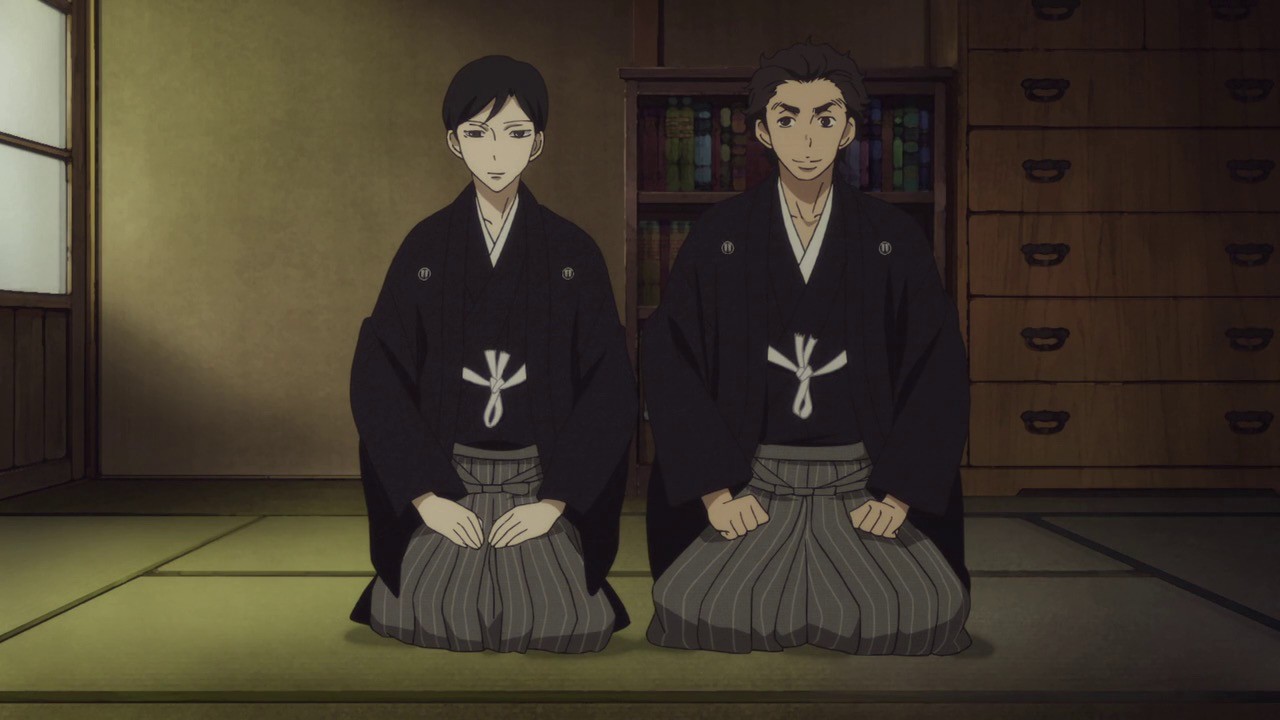
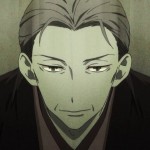
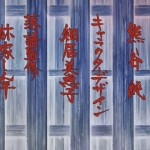
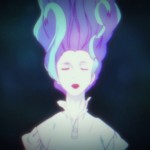
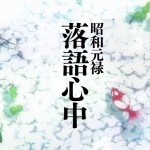
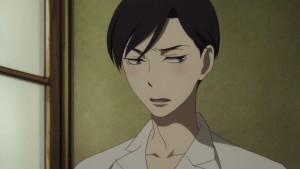
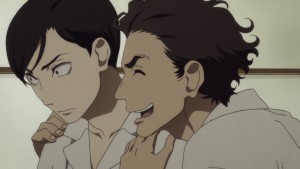
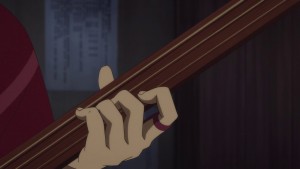
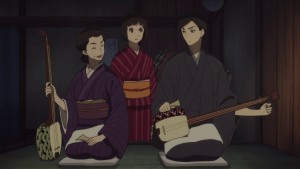

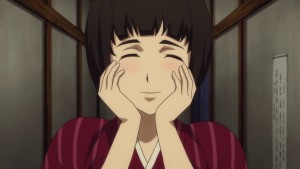
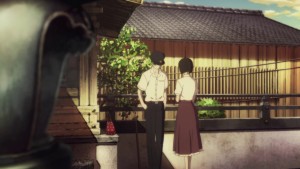
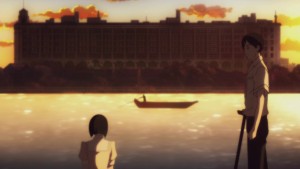
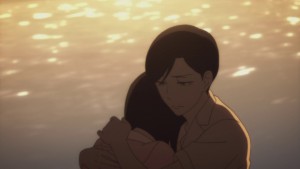
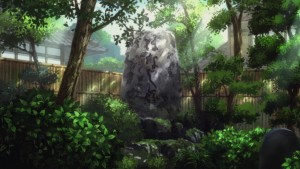
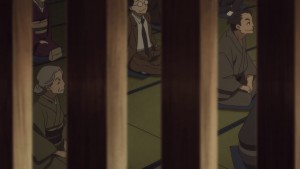
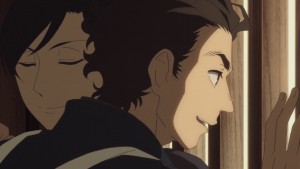
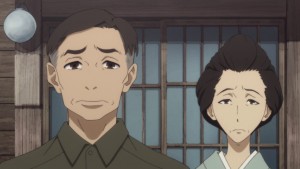
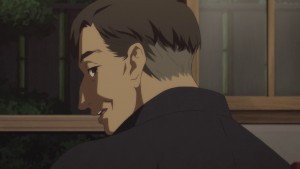

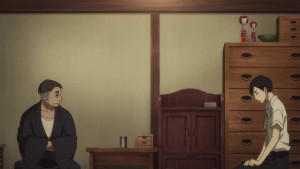
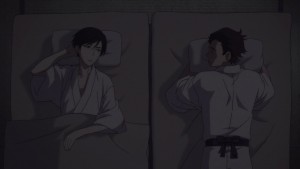

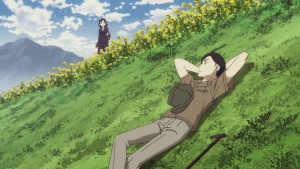
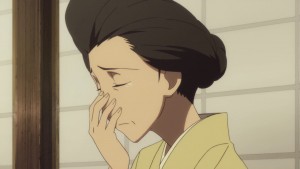

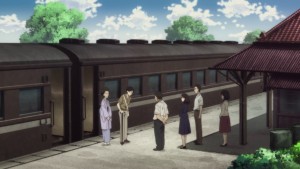


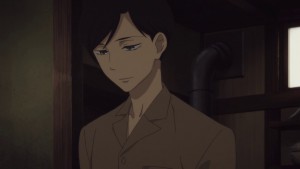
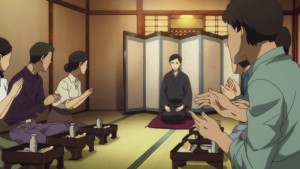
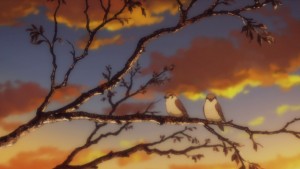
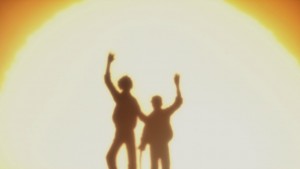
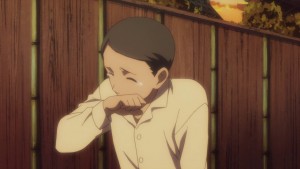
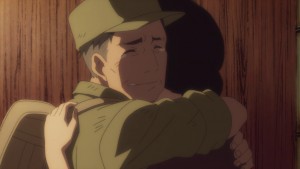

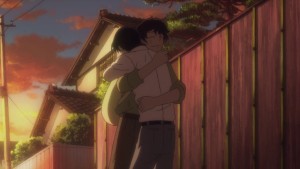
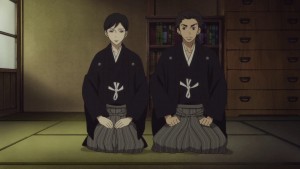
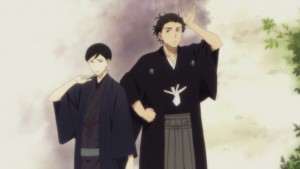
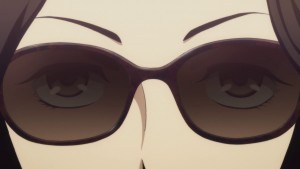



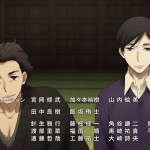
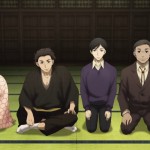
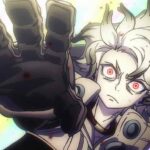
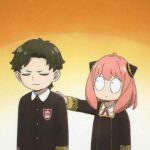
Ronbb
January 23, 2016 at 6:30 amGreat writeup, Enzo, and great insight into Kiku. By the way, if Kiku was 18 in 1941, he’s actually not that old.
Guardian Enzo
January 23, 2016 at 6:41 amBut an old soul…
As well, anime about adult characters are so old that a guy in his 40s or 50s seems like a geezer.
Ronbb
January 23, 2016 at 7:46 amThat’s true. By the way, love both the jazzy OP and soothing ED…both go well with a glass of wine in hand on an evening.
leongsh
January 23, 2016 at 7:12 amIt’s true that this show need not be done in animation form but that is too narrow minded a thinking to pigeon-hole it that way. What is more important is how the story is told – how it presents it and share it with the audience. Animation is just another way to do so. It’s rare for such material to be animated. I’m thankful that Shouwa Genroku Rakugo Shinjuu is being animated and that this anime adaptation is doing it beautifully. It’s a demonstration and reminder that anime should not be limited to the type of stories it tells and the audience that it tells it to.
sonicsenryaku
January 23, 2016 at 3:34 pmenzo, you tell your friend that there’s a certain resplendence in animation that cannot be captured with live-action. That’s why even if you an anime based on realism could have taken the live-action route, it doesnt at the end of the day. If he wants an example of that resplendence, look no further than a makoto shinkai film: art that makes even mundane architecture of life look exquisite. It’s like asking why someone would draw or paint rather than just take a picture of an object: surrealistic expressionism. You are able to see the world better through the eyes of the artist. This is something anime does better than any other medium so even if your series is grounded in realism, making the choice to animate it instead gives it the chance to use that “surrealistic expressionism” to enhance its narrative
sonicsenryaku
January 23, 2016 at 5:07 pm*have an anime based on realism that could have taken the live-action route* stupid derps
Guardian Enzo
January 23, 2016 at 5:20 pmThat’s funny, because that’s the exact analogy I drew. Why paint or draw when you have still cameras and video? The salient point here is that my pal is anything but a Philistine – he’s a cinephile, and open to watching anime. That’ why I really think this mostly comes down to a cultural difference.
sonicsenryaku
January 24, 2016 at 4:41 ama cultural difference in terms of using animation as an all-around story-telling medium or only when it applies to stories aimed for an older audience? because it seems like western audiences dont care about something being animated when it is geared towards kids but when it’s a more “adult” tale, then they tend to question why the story is being told in animated form. Oh and i wasnt under the impression that your friend was a philistine, but was rather making a point about why you would still choose to use animation over live action for narratives grounded in realism
Earthling Zing
January 23, 2016 at 4:44 pmWonderful second paragraph, its a thought I’ve often had, but generally quickly abandoned because of how Japanese live action often feels too forced too me. This is probably the best way any of the manga I love can be translated onto the screen.
Aside from that though, I liked how natural Kikuhiko’s development was. With this and BokuMachi dropping cliffhangers on us I’m sure next week will be plenty eventful.
Blip
January 23, 2016 at 4:55 pmWhile I would love to see kikuhiko and hatsutarou’s relationship in a romantic context, simply because it’s so rare to see bl in anime AND have it be thoughtful/artistic/not superficial, I also would be equally pleased if they’re friends from start to finish. It’s clear that they love each other deeply, but whether it’s in a platonic way or romantic is open to interpretation, I think, even though right now it seems to be leaning towards fraternity. I’m actually loving how ambiguous it is, and looking forward to how miyukichi’s arrival will shake things up.
gilraen_tinuviel
January 23, 2016 at 6:16 pmI feel this episode is an one note down compared to the two earlier ones. Don’t get me wrong, it’s still great but while watching I’ve felt the pace was little too haste and maybe it’s because it used Kikuhiko as a narrator too often, methinks. I understand they probably want to go to some specific point in the manga and maybeee they wanted to blitz through that part of material because the theme (I don’t know how that part is presented in the manga).
And about the war… uuuuuh, oh, it’s so difficult theme but it’s glossed over a little too much. I really, really wouldn’t want to change it into some political or historical commentary or to be the same old tale “war is hell” but it’s a little too much non-contextual. Except a commentary about the censorship and an one snippet from the factory, there weren’t shown any repercussions strictly tied to the war time. It looked to me more like “the two guys left for a mountain expedition and weren’t coming back for a long time and the third guy lived a calm life at the country side for some time”.
gilraen_tinuviel
January 23, 2016 at 6:45 pmOh, I’ve red Samu’s review on RC and he’s brought interesting facts about the source material and the adaptation itself. And his little observation how the episode’s narration is an analogy to telling rakugo’s story is interesting. So I’m confused even more, why it didn’t click for me completely.
Dop
January 23, 2016 at 11:29 pmI think the thing about the war part is that this is Kikuhiko’s story told from his viewpoint, and, given his general air of detachment, and given his bad leg and all, he wasn’t directly involved.
shira
January 24, 2016 at 12:12 amThe premiere had a fast pacing, the rest of the show has taken its time.
Episode 1 adapted all of Yotaro’s arc (volume 1 and 1st chapter of volume 2). Some of the scenes that didn’t make it can be seen in the OADs, such as Yotaro’s tattoo, Yakumo taking Yotaro to Kyoto with him when he goes to see his old friend the rakugo master Tsuburayashi Banzai and his son Mangetsu, Konatsu looking through old photographs of Yakumo and Sukeroku with Matsuda (in the manga Yotaro was there but the OADs changed the order of the events), Yakumo performing as Sukeroku for Konatsu during one of their arguments when he visits her while she works, etc.
Episode 2 adapted one half of chapter 6 (the rakugo scenes were anime original). This episode adapted the 2nd half of chapter 6, no anime original parts. The chapters are long, an average of 40-50 pages and there’s around 8 chapters left for the flashback arc to be over.
Guardian Enzo
January 24, 2016 at 1:27 amHonestly, I feel like that’s a bit unfair as regards the war. This isn’t a series about the war – just because it has an arc set in the 40s doesn’t mean it has an obligation to take ownership for Japan’s sins. Moreover, this episode in particular is about Kikuhiko’s disenfranchisement from the world, isolated in the countryside.
gilraen_tinuviel
January 24, 2016 at 3:21 amOh my god, I didn’t mean “Japan, confess your sins!”. Funny thing like all of you thought it’s exactly what I meant, which I denied in the post above. Rather an impact of war for civilians, even if people didn’t fight in a war as soldiers didn’t mean it didn’t shaped them. Like yeah, a country side was safer for sure and probably they had more food overall, especially at first but it doesn’t mean everything was great. Yet, except working in a military factory there wasn’t any sings of war at all, they even had a fancy foods like fish and rice(!), it looked rather idyllic even. Maybe something like small things – showing him making barter, swapping jewellery of master’s wife for food or medicine, or showing every time he went out from factory there’s less and less men and they’re replaced by women, maybe him showing frustration about his leg, because of it he couldn’t be with his friend and the master (really, fighting doesn’t have to be about being patriotic at all) or some destroyed city when they were coming back by train to Tokyo.
Dop
January 23, 2016 at 11:26 pmIn a way, it’s almost a shame this and Boku Dake are showing in the same season, had one of them been in another season that would have meant we had one more season where there was a stand-out excellent show.
Because this really is quite splendid, and if I had to choose ‘best of season’ it’d have to be a tie.
My favourite scene of the episode was, I think, Kiku walking in silhouette against a low sun which I perceived as a setting sun, maybe because symbolically that worked. It was such a profound image.
Mark
January 24, 2016 at 6:07 amJust noticed that Yakumo and Sukeroku are similar to Kaoru and Sentaru on the Kids on the Slope.
samui
January 24, 2016 at 4:36 pmAGREED. This is so like Kids on the Slope 2.0 so far.
Guardian Enzo
January 24, 2016 at 5:18 pmLet’s hope it finishes a lot more strongly!
samui
January 25, 2016 at 3:34 amI am also asking the anime gods for the same.
samui
January 24, 2016 at 4:33 pmThis is not anime anymore. It’s art. A very lovely art. Clearly my AOTS this season.
The reunion scene still gets me and it’s my third rewatch of that show. A bit of a shameless plug, here are my thoughts this season: http://samui26.wordpress.com
and oh, this site’s gotten easier to scroll lately. Wow.
romy
January 24, 2016 at 4:38 pmOfcourse this anime is in my top 3 for the winter season. Kiku is having me go through so many motions. This quiet graceful guy…..and he finally smiled! His rowdy best friend, their rivality, and bromance is really very moving. Why do i have a feeling this is going to be very painful……i’m getting ready for it………